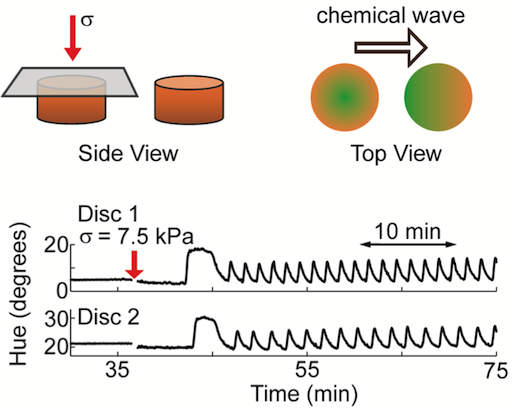Polymer gels undergoing a
self-oscillating chemical reaction have been previously shown to pulsate
autonomously while exhibiting periodic color changes. Van Vliet and Balazs have now demonstrated that a
non-oscillating, quiescent gel can be “resuscitated” by applying mechanical pressure to the
material. By varying the conditions of the reaction, the amplitude and
frequency of the mechanically resuscitated oscillations can be tuned. Further,
it was demonstrated that gel-to-gel communication occurs when the gels are
spaced sufficiently close together. Such communication allows transmission of
chemical signals away from the site of mechanical deformation. Chemical
response to mechanical stimuli in these gels was predicted through simulations
by Balazs in 2007, and have now been
experimentally confirmed by Van Vliet.
Such behavior enables new applications that sense mechanical stimuli and
respond chemically. Reported in I.C. Chen et al., Advanced
Functional Materials (2012)

Figure:
Schematic of a pressure sensor comprising two gels in which mechanical stress
is applied to the left gel (disc 1), causing signal transmission towards the
right gel (disc 2). Quantitiatve data show that disc 2 oscillates
This
work was supported primarily by the MRSEC Program of the National Science
Foundation under award number DMR-0819762.